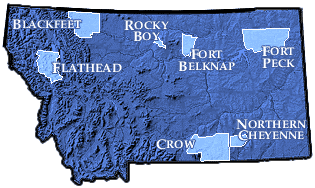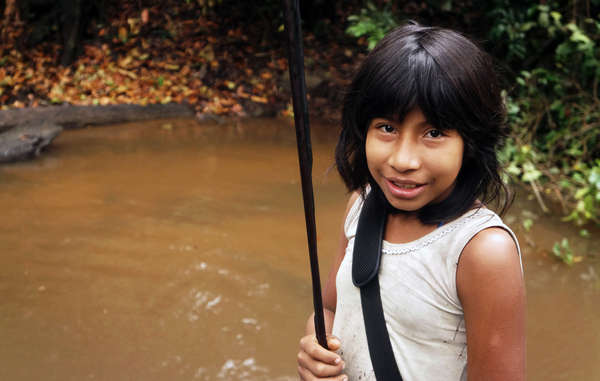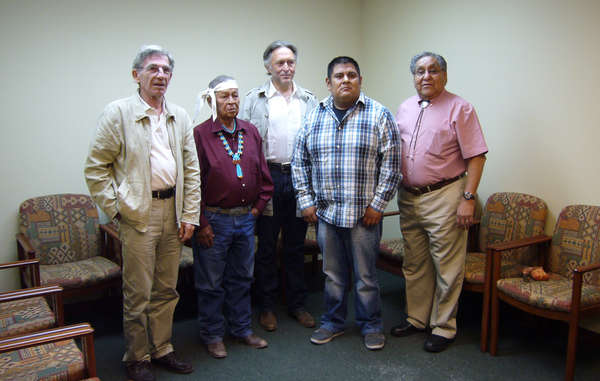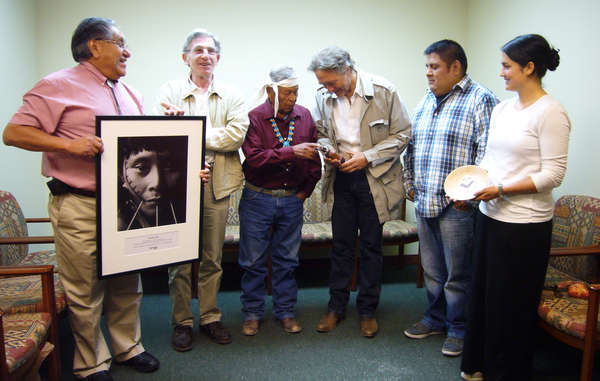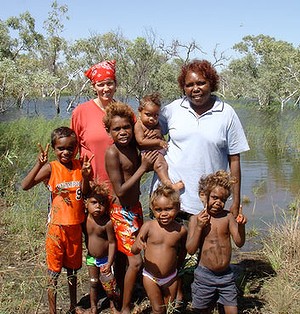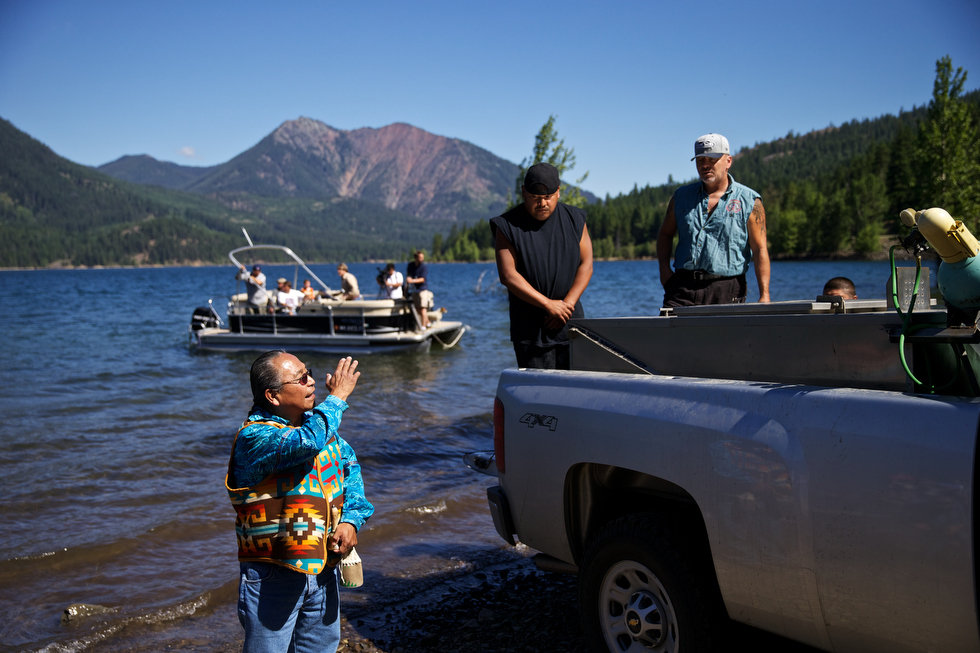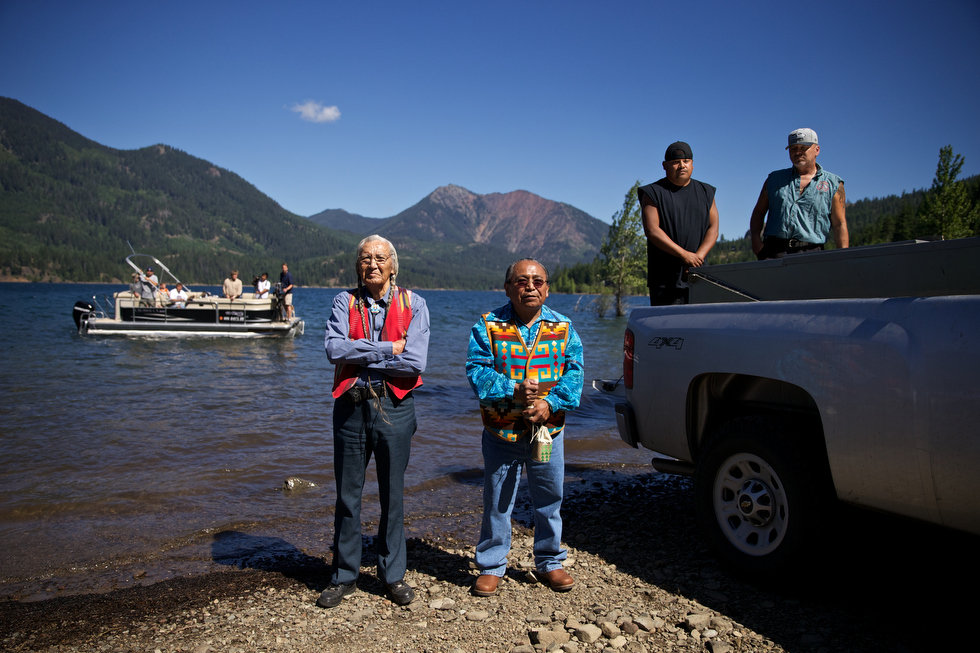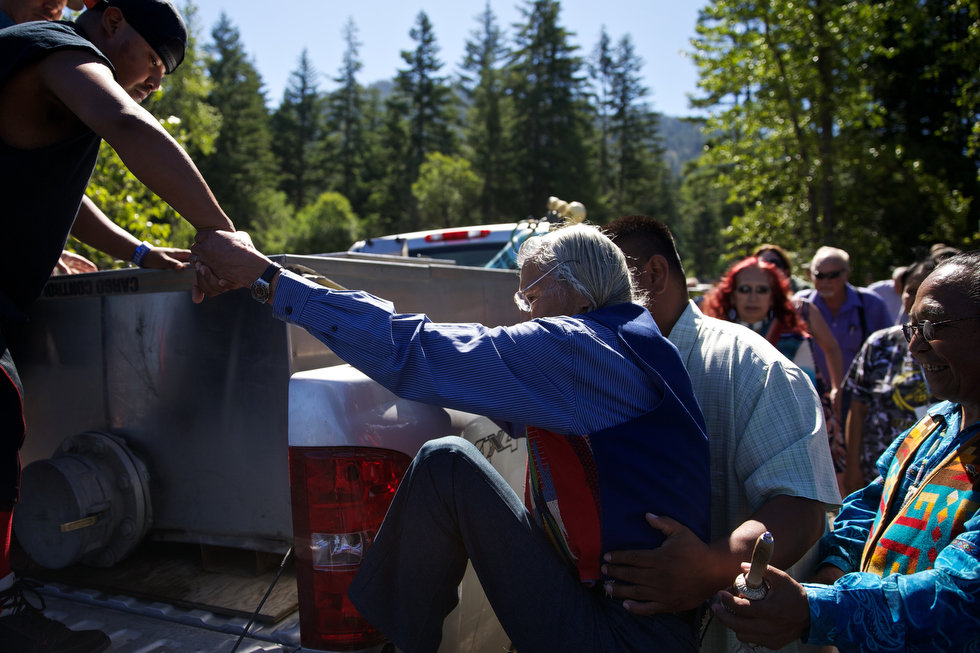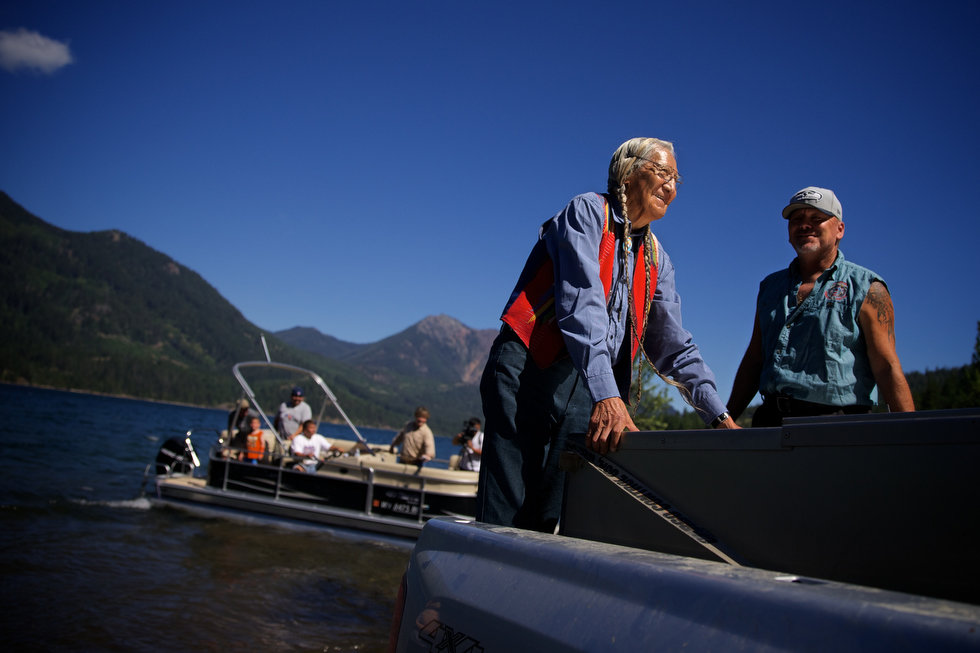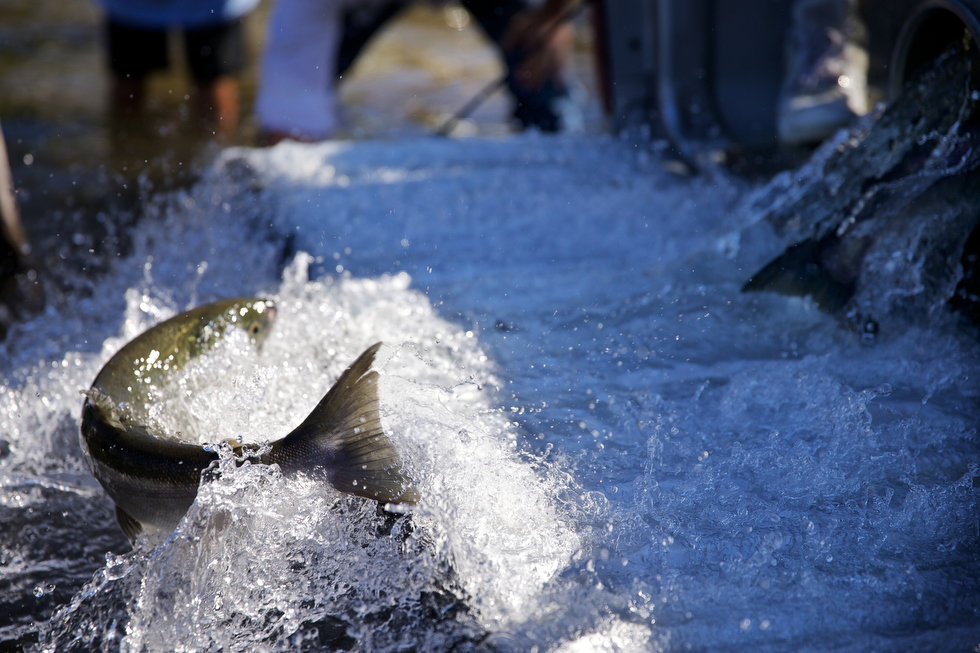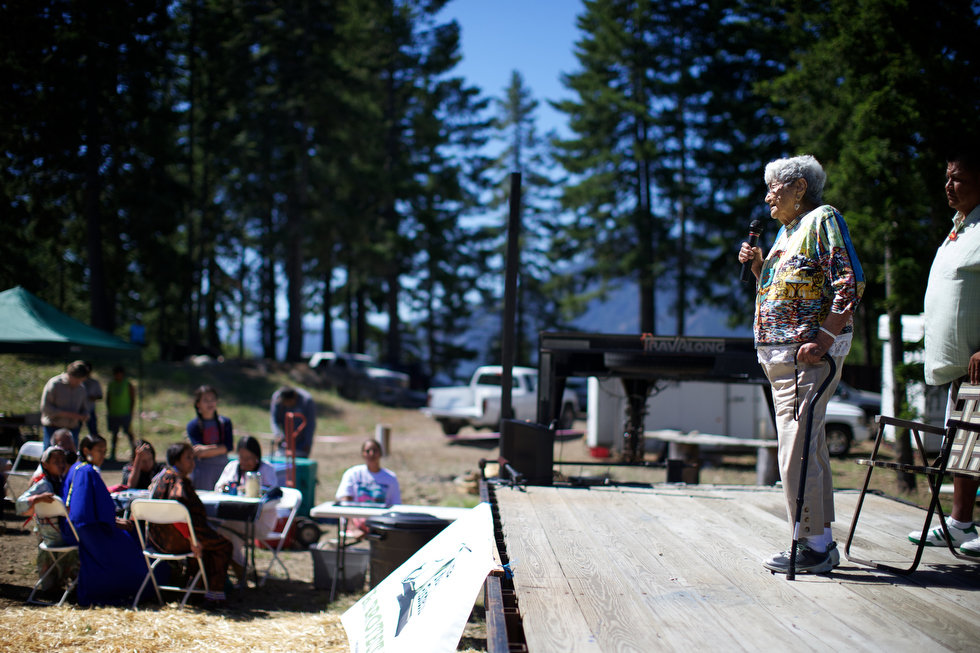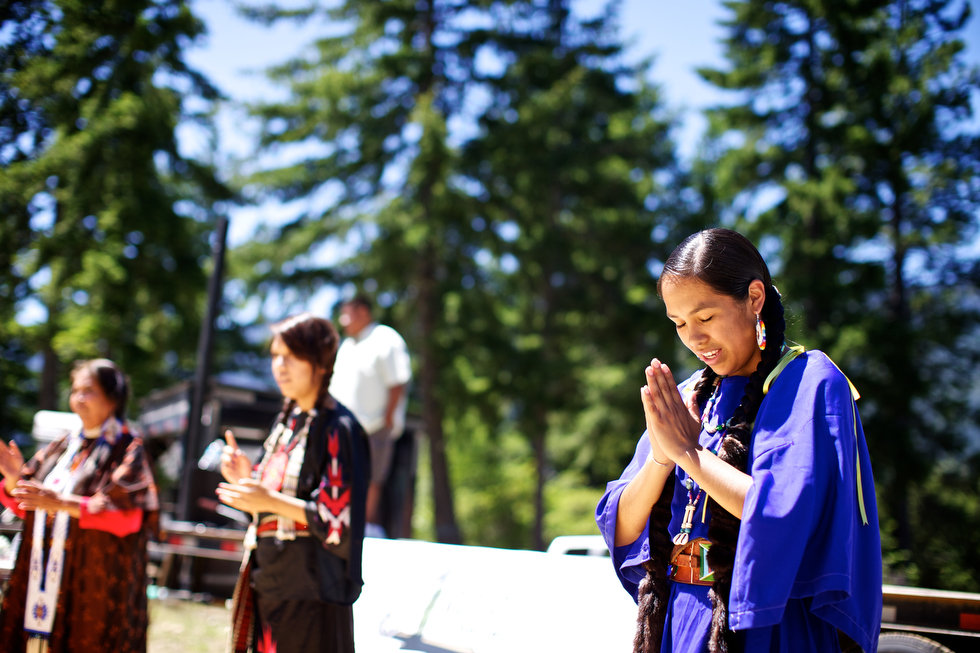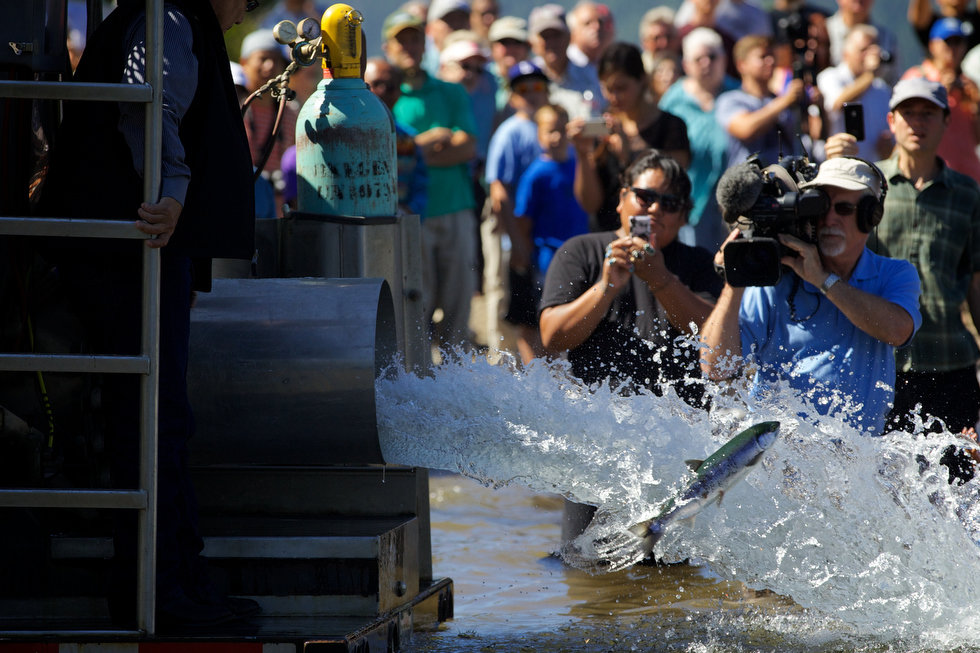A Bonneville Power Administration transmission-tower construction project has been on hold for more than a year as a landowner tries to defend ancient Indian archaeological sites and stops on the Lewis and Clark Trail.
July 15, 2013
Seattle Times staff reporter
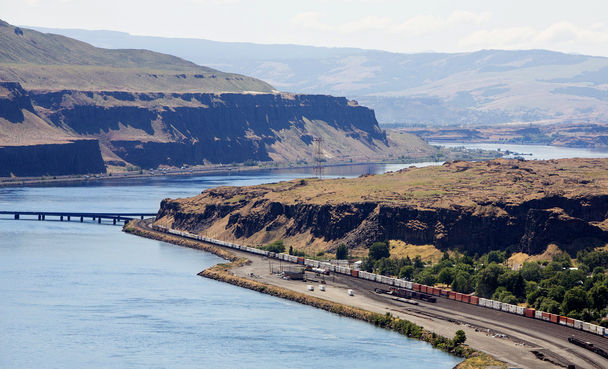
STEVE RINGMAN / THE SEATTLE TIMES
WISHRAM, Klickitat County —
All he was looking for was a little retirement property. But Robert Zornes, a Forks RV-park owner, wound up with quite a lot more.
“I kept seeing this property, 122 acres on more than a mile of the Columbia River for a quarter-million dollars, then it’s lowered to $100,000. And I am thinking, ‘This has to be a practical joke,’ ” Zornes said. So he bought it, right off a real-estate website, without ever talking to the property owner.
Then came the big surprise: He had purchased one of the most historically and archaeologically sensitive pieces of property in the state.
Home to a campsite and portage route on the Lewis and Clark Trail. A cave, with prehistoric Indian rock art. Indian burials, petroglyphs and story stones. And some of the last upland vestiges of an important Indian village near Celilo Falls, once one of the greatest Indian salmon fisheries, gathering grounds and trading areas in North America.
“I wanted a pig, a horse and a cow, or maybe a dog,” Zornes said. “I wasn’t looking for a historical property. I just wanted some place to retire.”
But since he purchased the property in 2011, Zornes often can be found in what he calls his war room: a study in his double-wide by the river, packed with historic photos and books — and documents from two years of frustrating correspondence with the Bonneville Power Administration.
 The federal agency — which sells power from the dams on the Columbia and Lower Snake rivers — is in the middle of construction of a 28-mile, more than $200 million transmission line. Construction started right about when Zornes bought the property — and he soon received a letter from the agency informing him the BPA was about to cross the river and replace a tower near the cave. The new tower would be taller, wider and require blasting to construct — which he feared would destroy the cave and its ancient art.
The federal agency — which sells power from the dams on the Columbia and Lower Snake rivers — is in the middle of construction of a 28-mile, more than $200 million transmission line. Construction started right about when Zornes bought the property — and he soon received a letter from the agency informing him the BPA was about to cross the river and replace a tower near the cave. The new tower would be taller, wider and require blasting to construct — which he feared would destroy the cave and its ancient art.
And Zornes, as it turns out, is a history buff. As he put two and two together, he came to understand just how special the landscape he had purchased was. “BPA starts talking about a bulldozer and we kind of freaked out.”
BPA informed him in a 2012 letter that if he didn’t grant access across his property, the agency would dynamite an alternative access road, doing potentially more damage. The fight was on.
Zornes denied access across the easement on his property, saying it was granted to a different federal agency for another purpose, and since expired. He filed trespass claims. He invited the Yakama Indian Nation to revisit sacred lands on his property. He cold-called the lead preservation officer for the Lewis and Clark National Historic Trail in Omaha and invited him to come have a look.
Zornes’ efforts so far have helped shut down construction of the project on his property at a cost of $2 million and counting. The agency contends its easement is valid, and that it can and will proceed with the project. Zornes is just as adamant in his opposition.
“You think the government is your friend,” Zornes said. “But they are more like the kid that beat you up for your lunch money.
“I’m not a senator, I am not a congressman. Here we are, two uneducated, lower- middle-class people in Forks,” he said, speaking of himself and his wife. “We have held them up more than a year. I think that’s significant.”
Bonneville officials say the agency has wanted to listen to all sides to reach agreements in the dispute, and stopped construction in order to do so.
“It’s a sensitive site, and we are trying to be extra careful,” said Lorri Bodi, BPA’s vice president for environment, fish and wildlife. She acknowledged there have been “bumps in the road.”
“We have discovered additional things, and certainly we have made some mistakes along the way,” she said. Those include a BPA contractor mistakenly bulldozing and destroying a prehistoric relic documented as a burial cairn on Yakama lands, despite promises to protect it.
Bodi contended the agency has made up for those mistakes and is working hard to minimize the damage by the project.
Preservation concerns
State records show a continuing pattern of frustration in getting the right answers from Bonneville, or any at all.
When the contractor bulldozed the cairn, the agency did not seem to appreciate the seriousness of the matter, state assistant attorney general Sandra Adix wrote Bonneville last summer.
Repeated attempts by the state Department of Archaeology and Historic Preservation to gain specific information about the agency’s construction and its ongoing and potential effect on archaeological resources “seem to have fallen into a black hole,” Adix wrote in other correspondence.
The agency also has not included the National Lewis and Clark Historic Trail as a full partner in the consultation process, said Dan Wiley, chief of stewardship. “We have gotten short shrift and have continuously tried to bring to the table the recognition that this a unique site, a special site, and it deserves protection from further negative impacts.
“I don’t know if it is too late or not. That is really up to BPA and whether or not they have real concern about cultural resources, and protection of cultural resources.”
Wiley would like to see the transmission line located miles to the east. As planned, it will be in view from Columbia Hills State Park, with its petroglyphs, as well as the Lewis and Clark Historic Trail, and from across the river at the Confluence Project art installation planned at Celilo Village by internationally known artist Maya Lin.
It also will further clutter views of the Columbia River Gorge, but BPA already has obtained a promise from the Friends of the Columbia River Gorge not to sue in return for a payment of $1.8 million. The BPA also in December paid a more than $2 million settlement to the Yakama Indian Nation to allow the project to continue despite impacts to its culturally sensitive lands.
Conflict still unsolved
At Bonneville, there’s not at present a willingness to consider another alignment, top officials say. Because there is already a utility line across the river, landing on a tower dating to the 1950s near the cave. That alignment, chosen through a lengthy public review process as part of an environmental-impact statement, is preferred by BPA.
“It’s much like repaving an old highway; are you better off moving it, or leaving in the same place?” said Larry Bekkedahl, senior vice president for transmission services at BPA. “In this case we have chosen using the existing line, because it had lesser impacts than trying to find other routes that would move the line on both sides and have a new river crossing, as well as time delays. So the bottom line is we would reuse the existing line and not relocate it to another location.”
But what Bonneville has in mind is nothing like the impact of what is already there today, historic preservationists say.
“This is not just repaving,” said Allyson Brooks, Washington’s State Historic Preservation Officer. “It is the equivalent of taking a two-lane road and making it a superhighway. It is not the same thing. Maybe in essence, but in size and impact, it is greater.
“One of the reasons these are public processes is so people get to say what the impact is, it is not a unilateral decision. That is democracy.”
 Bonneville has committed to moving the tower 20 feet farther north of the cave with its prehistoric rock art. But it will be a bigger, higher tower — 243 feet tall, compared with the 190-foot-tall tower near the cave today, with 22 lines instead of three. The new tower also has a much larger and taller footing, and requires controlled blasting to set it in the basalt cliffs above the river.
Bonneville has committed to moving the tower 20 feet farther north of the cave with its prehistoric rock art. But it will be a bigger, higher tower — 243 feet tall, compared with the 190-foot-tall tower near the cave today, with 22 lines instead of three. The new tower also has a much larger and taller footing, and requires controlled blasting to set it in the basalt cliffs above the river.
BPA assures the blasting won’t destroy the cave. But that’s still under review — and the agency’s credibility has been dented by historic sites and archaeology overlooked and even destroyed as construction got under way.
“We are still working on damage assessment for the cairn, and the impacts for the Lewis and Clark Trail are unresolved,” Brooks said. “If we could lessen the direct and visual impacts, we would certainly prefer that happening. It’s been difficult. It feels rushed, and in the rush the time hasn’t been taken to really balance things the way they should be balanced.”
To Zornes, the fact that one transmission line is there today doesn’t justify building another, it argues for backing off a place that already has been altered by industrialization. First came the railroad. Then the inundation of Celilo Falls to build the Dalles Dam in 1957. Then the transmission towers built that exist today — to be superseded now by even larger towers, with more lines.
“Our preference is no new towers,” Zornes said. “Two wrongs don’t make a right. The first tower should not have ever been placed on this historic and culturally rich and highly scenic bluff.”
Bonneville has since written Wiley to state the agency doesn’t believe the trail merits listing on the National Register of Historic Places, which would afford it more protection — a decision blasted by Washington’s Department of Archaeology and Historic Preservation, the National Park Service, and Johnson Meninick, Yakama Indian Nation cultural resources program manager.
The conflict remains unresolved.
“What is left is intact”
Wiley said it wasn’t until he came here in person that he understood just how significant this place is.
“You can only see so much from your desktop,” he said.
Once on the site, he walked the same sands that bedeviled Lewis and Clark and the Corps of Discovery as they portaged around the roaring falls at Celilo, one of the greatest fisheries in the aboriginal world.
Just above on the cliffs is the very spot where William Clark likely stood to draw the famous Codex H map of what he called “the Great Falls of the Columbia” — Celilo Falls, with Indian lodges and fish-drying racks along the banks.
“It is a highly significant location for the two cultures of the Pacific Northwest and their intersection,” Wiley said. “What is left is intact. The palisades that are above the water are described in the journals. The walkway that Lewis and Clark took on the north bank, that is pretty much intact, and there is no other place on the planet that the events of Oct. 22 and 23 and 24, 1805, could have taken place.”
Just above Lewis and Clark’s portage route is the cave, used for tribal vision quests and other religious and spiritual rites for centuries untold. Inside, the light is soft, and drawn figures with outstretched arms keep an enigmatic vigil on the cool rock walls.
Through its narrow opening, the cave looks to a view not seen in all the centuries people have stood here: the transmission towers Bonne- ville already has built in its chosen alignment, just across the river.
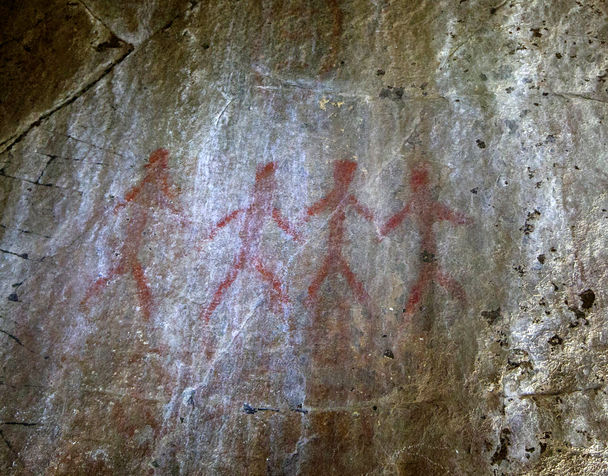
Prehistoric Indian art on a cave on Robert Zornes’ property.
Lynda V. Mapes: 206-464-2736 or lmapes@seattletimes.com


